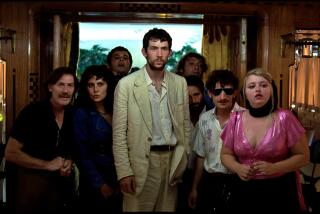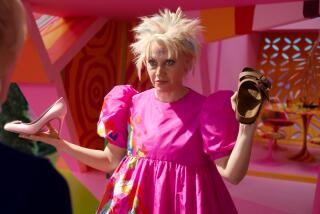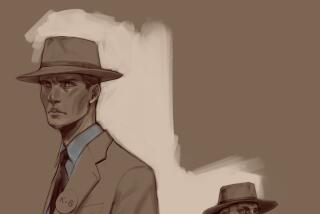Production Design: All aboard ‘Hugo’s’ 1930s train station set
Surely, any author’s dream is to be able to walk into the world they’ve created in their book. Plenty of writers have been afforded virtually that experience as their books have been adapted to film, but perhaps no one has realized this dream so intensely as Brian Selznick when he visited the set for the Nov. 23 release “Hugo,” based on his 2007 book “The Invention of Hugo Cabret.”
The film — director Martin Scorsese’s first geared toward a young audience — was shot on a full-scale train station set built from scratch, directly inspired by Selznick’s illustrations.
“It was really as if my drawings had come to life around me, except everything was bigger and more beautiful than I even could have imagined,” said Selznick, who was particularly struck by the production, having done theater set design at Brown University in Providence, R.I.
The Oscar winners behind the massive set, built at London’s Shepperton Studios, are production designer Dante Ferretti and set decorator Francesca Lo Schiavo, who have each worked on several of Scorsese’s films. The Italian husband-wife duo constantly turned to the source material to create the look of the 1930s-era adventure about an orphan who lives in a train station.
“The book looks like a storyboard, [which] helped me a lot,” Ferretti said.
Selznick’s book, which sees the boy get caught up in a mystery involving his late father, was the first novel awarded the Caldecott Medal for illustrations. Less a novel and more a combined experience of reading a novel, a picture book, a graphic novel and watching a movie, the book contains 284 pages of drawings that tell the story as much as the 200 or so pages of text.
In addition to the novel, Ferretti and Lo Schiavo found inspiration in the same place Selznick did: the history of pioneering filmmaker Georges Méliès. The turn-of-the-last-century inventor is incarnated in the book as well as the film adaptation as Papa Georges (Ben Kingsley), the owner of a toy shop in the station modeled after photos of the real toy booth Méliès operated.
“Martin was so passionate about this story because it was about film.... He makes the story of Georges Méliès alive,” Lo Schiavo said.
To create a historically accurate look, Lo Schiavo painted several period toys to make them look new but also made hundreds of toys from scratch — teddy bears, dolls, horns, balls, model ships, miniature carousels and more, plus the wind-up automaton central to the story.
The toy booth was one of many shops that were part of the extensive train terminal set — the lobby alone took two stages to build. Scorsese gave Ferretti and Lo Schiavo several historical documentaries and early French films for their body of research about 1930s train stations.
Though Ferretti was obligated to stay true to history, he said he felt a lot of freedom in the creative process.
“I said, ‘OK, I’m an architect living in the 1900s,’” Ferretti recalled. “Why make a copy of what has been made? I put myself in there and invented something.”
More to Read
The biggest entertainment stories
Get our big stories about Hollywood, film, television, music, arts, culture and more right in your inbox as soon as they publish.
You may occasionally receive promotional content from the Los Angeles Times.






